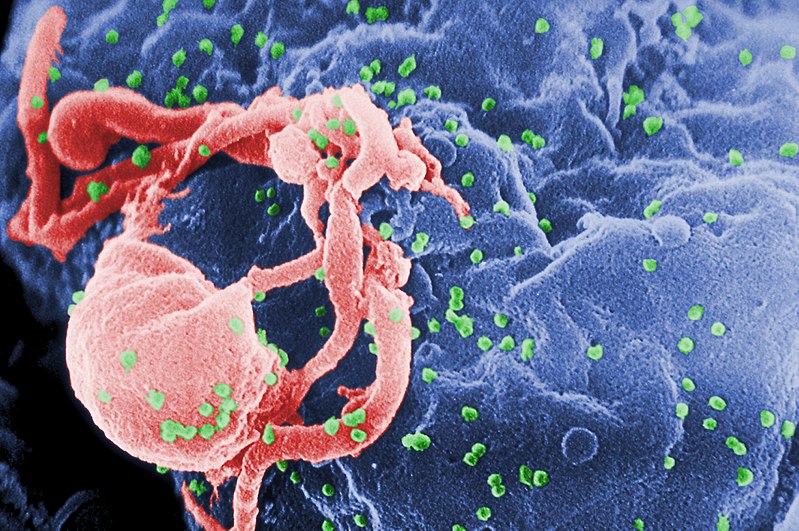What is HIV?
1 Answer
See below...
Explanation:
HIV stands for Human Immunodeficiency Virus.
There are two variants: HIV-1 and HIV-2 . Both are ssRNA-RT Retroviruses. The RT indicates the use of Reverse Transcriptase.
HIV-1 is the more virulent (aggressive) form, and was the first discovered.
It is a rather recent virus: it only started to appear in the human population in the early 1980's.
Originally addressed as HTLV III (Human Tumor Lymphoid Virus Serotype 3) and/or LAV (Lymphadenopathy Associated Virus), it was later renamed to HIV. The name HTLV-III is now used for a different virus: Human T-cell Lymphotropic Virus type 3 .
Every virus has a designated Host-cell : for the common cold viruses (there are 100+ of them!) it is the olfactory tissue ( the tissue behind your nose that you smell with).
For the HIV -viruses the hosts are cells in the Immune system, mainly T-cells, Dendritic cells (located in skin, but present in the blood in immature form) and Macrophages.
In the early 80's the infection spread primarily within gay communities. It was therefore originally labeled GRID: Gay-Related Immuno Deficiency.
But gradually it transpired that the virus was not gender-specific (thus not exclusively male-related).
As HIV attacks cells in the immune system, the affliction was renamed to Acquired Immuno Deficiency Syndrome , in short: AIDS.
In the early days it was noted that a high percentage of infected patients showed a whole range of symptoms, most notably amongst them a type of tumor called Kaposi's Sarcoma (KS) .
However, it was later proven that HIV itself doesn't/can't cause KS, but instead this was caused by a different virus: Kaposi’s Sarcoma Herpesvirus (KSHV). This virus is, like HIV itself, sexually transmitted, and AIDS sufferers have a far higher chance of infection with KSHV then other patients.
As quite a few other afflictions ride piggyback on an infection with HIV, but are NOT caused by the HIV-virus itself, these afflictions are commonly addressed as ARC : Aids-Related Complex.
HIV in action:

Scanning electron micrograph of HIV-1 (in green) budding from cultured lymphocyte. Multiple round bumps on cell surface represent sites of assembly and budding of virions.
For more info about Tumor virology, may I suggest this interesting article: https://www.ncbi.nlm.nih.gov/pmc/articles/PMC3501656/

